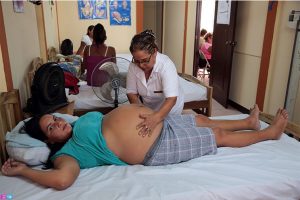While Nicaragua is still recognized as the poorest country in Central America and the second poorest in the Western Hemisphere, since subscribing to the Millennium Development Goals (MDGs) in 2000, Nicaragua has made exceptional strides in improving the health of its women that should not go unrecognized. These successes have been illustrated by a reduction in the nation’s overall maternal mortality rate from 86.47 deaths per 100,000 births in 2005 to 50.6 per 100,000 birth in 2012. Health in Nicaragua is bearing great witness to its progress in lowering its maternal mortality rate, notably attributed to the implementation of its Red Nacional de Casas Maternas.
The Casa Materna, or “Maternal Home,” is an establishment that offers short-term  residence, free of charge, to high-risk expectant and postpartum mothers. The Casa Materna provides these women with necessities such as food, education, shelter, transportation and obstetric care for the preparation of childbirth or recover post-procedure.
residence, free of charge, to high-risk expectant and postpartum mothers. The Casa Materna provides these women with necessities such as food, education, shelter, transportation and obstetric care for the preparation of childbirth or recover post-procedure.
While births occur at a nearby hospital, the services of the Casa Materna provide support to expectant mothers from rural areas to guarantee access to immediate medical needs and prevent potential complications from homebirths. Casa Maternas are especially vital in a country where, as of 2006, abortions have been ruled illegal.
The Casa Materna was conceived in the late 1980s at the grassroots level in response to Nicaragua’s growing rates of maternal mortality in rural areas. As of January 2013, there were one hundred Casa Maternas throughout the country.
The Nicaraguan Ministry of Health (MINSA) renders some medical care and financial assistance for meals. However, at times, mothers are expected to cover additional operational costs out of pocket. This is an especially heavy burden for women coming from rural areas and can be the limiting factor that inhibits them from taking advantage of the Casa Materna’s resources. Moreover, when the demand for space in the Casa Materna exceeds the capacity, women can be turned away or have to endure poor and unacceptable conditions.
Due to a general shortage of support, most of Nicaragua’s Casa Maternas spend more money than they can afford. To combat such shortages, some Casa Maternas have established small businesses to promote self-sustainability and pay for the supplies which MINSA and outside funding sources fails to provide.
 In July 2013, MINSA declared that it would render support for the installation of 45 additional Casa Maternas throughout the country. While this is a significant step that would further support the admirable decline in maternal and child mortality in the nation, more collaborative efforts between MINSA and private organizations can and need to be cultivated. These types of relationships will be required to ensure the Casa Maternas’ sustainability and effectiveness towards meeting MDG5 to improve maternal health in Nicaragua. Nicaragua still has a long way to go, but considering its progress and the push behind the MDGs and SDGs, I believe that it can and will meet this ambitious goal.
In July 2013, MINSA declared that it would render support for the installation of 45 additional Casa Maternas throughout the country. While this is a significant step that would further support the admirable decline in maternal and child mortality in the nation, more collaborative efforts between MINSA and private organizations can and need to be cultivated. These types of relationships will be required to ensure the Casa Maternas’ sustainability and effectiveness towards meeting MDG5 to improve maternal health in Nicaragua. Nicaragua still has a long way to go, but considering its progress and the push behind the MDGs and SDGs, I believe that it can and will meet this ambitious goal.

